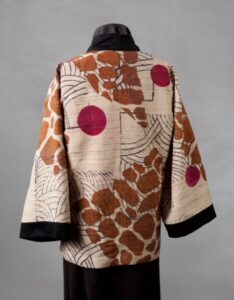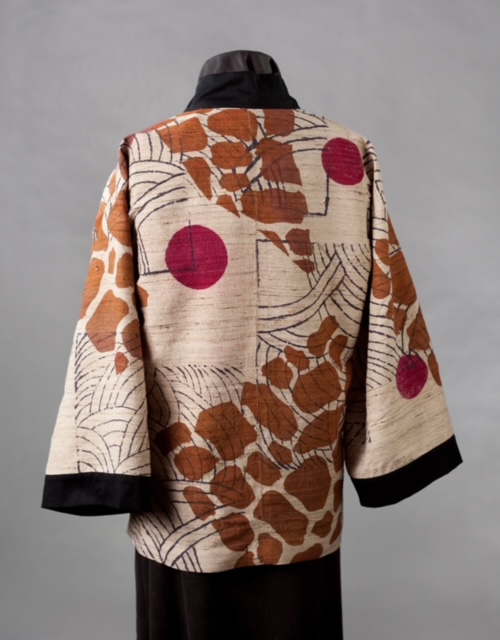
- If you are in love with an idea, you are no judge of its beauty or value.
- It is difficult to see the whole picture when you are inside the frame.
- After learning the tricks of the trade, don’t think you know the trade.
- We hear and apprehend what we already know.
- The dog that stays on the porch will find no bones.
- Never state a problem to yourself in the same terms it was brought to you.
- If it’s offbeat or surprising it’s probably useful.
- If you do not expect the unexpected, you will not find it.
- Don’t get too serious.
- If you hit the bullseye every time the target is too near.

- Work Hard. We all start out bad, and go as far as talent and dedication will take us. Start when and where you are, and practice; you’ll improve.
- Don’t Steal. Don’t take credit for the work of others. Make your own magic.
- Be Enthusiastic. Creativity is fun, it is also work. Enjoy it, but do it like it matters because it does!
- Don’t Compare yourself to others. It’s fine to analyze the work of those you admire to help you improve your own. It’s how we learn. But be careful. Comparison can make you miserable.
- Be Generous with praise and encouragement. Know the difference between critique and criticism. Be clear, concise, and firm with critique, and offer it only when asked. And leave the criticism to critics.
- Value Perseverance over talent. Talent has limits and will let you down. Perseverance lets you punch above your weight. It will keep you going when you want to quit.
- Be Confident, never arrogant. Confidence allows you to admit when someone else is right. Arrogance prevents this and will stunt your growth.
- Reach Back. It gets harder to get a break every day. Veterans should mentor. (And remember, mentorship is not a dating app.)
- Be Brave, but be humble. Even it out. You are neither as bad, nor as good, as you think.
- Keep Practicing. There is no destination for artists. It is all a journey. Apply yourself, and you’ll keep growing forever.
-Source unknown

- Learn to love the process. Creating is often a long and tedious process. Learn to love each step.
- In the middle of the process there will be stages that can seem dreadful or look hideous. You’re not done. It’s a process.
- Put it up on the wall, place it on a stand, sit it where you can live with it for a few days. Keep walking by. The next step will come to you. One of my pieces sat for three years.
- Some people can go to a class and create finished pieces that look done. I go to classes to learn techniques, so nothing looks done, just experimental. You are who you are, and you haven’t failed if your classwork isn’t a masterpiece.
- Sometime in the history of art, oil painting got shoved to the top of the heap as the most valuable art type, followed, maybe, by certain types of sculpture. Look back in history and you’ll see that it wasn’t always the case. Artists created all kinds of work. Even Michelangelo (di Lodovico Buonarroti Simoni) produced what is now called decorative art.
- Take classes in techniques and disciplines that are out of your territory. You’d be surprised at how much it broadens your possibilities.
- Learn from many teachers. Even if you take away just one thing from a class, it will be worth the price of admission.
- Buy the best tools and materials that you can afford. Sure, you’ll start with basic materials, but as you progress, you’ll find that good quality will help you create your best work.
- Women are the unsung heroes of the art world. It will make your teeth grind. Ignore the ignorance and work to demolish the myth. You know the drill.
- Try not to pay attention to creating what you think will sell. Create without the constraints of whether it will look good over someone’s couch or whatever similar statement applies to your medium. Such thinking will be the death of your creativity.
Write some of your own rules and share them. Also, take the best and leave the rest. Not all rules work for everyone.
–Jane Bartlett, who also wrote this post for me. Thanks, Jane!

My 2024 workshops:
- Sea & Sky at Schoodic, August 4-9, 2024.
- Find your authentic voice in plein air: Berkshires, August 12-16, 2024.
- Art and Adventure at Sea: Paint Aboard Schooner American Eagle, September 15-19, 2024.
- Immersive In-Person Workshop: Rockport, ME, October 7-11, 2024.


Such valuable insight and advice. I found this really interesting.
Sometime in the history of art, oil painting got shoved to the top of the heap as the most valuable art type, followed, maybe, by certain types of sculpture.
I find the same in music. Sometime in history, the piano bumped everyone else off the stage.
Thank you for all these words of wisdom.
All of those rules are excellent. I’d add this one:
Don’t be afraid to bend or even break the rules. On more than one occasion I’ve had other artists tell me I shouldn’t do this or that. That’s when I pull out my “artistic license” and tell them what I’m doing is okay.
If I were to offer up one rule that should never be broken, it is to never steal or take credit for something that is not yours. If you are using a reference photo (even something you saw online) that you did not take yourself, be sure you have permission from the PHOTOGRAPHER before you paint. If you are copying another artist’s painting (and there is value to doing that as you’re learning), don’t take credit for it and try to pass it off as your original work. I see this all the time and it makes me crazy. Photographs and paintings are the creative PROPERTY of the photographer or artist.
these are wonderful and has left me thinking that I need to write my own list. But I also want to share these. Would that be OK with the originators? I think there’s a ton of wisdom here! Maybe I should just paint them on my studio walls…